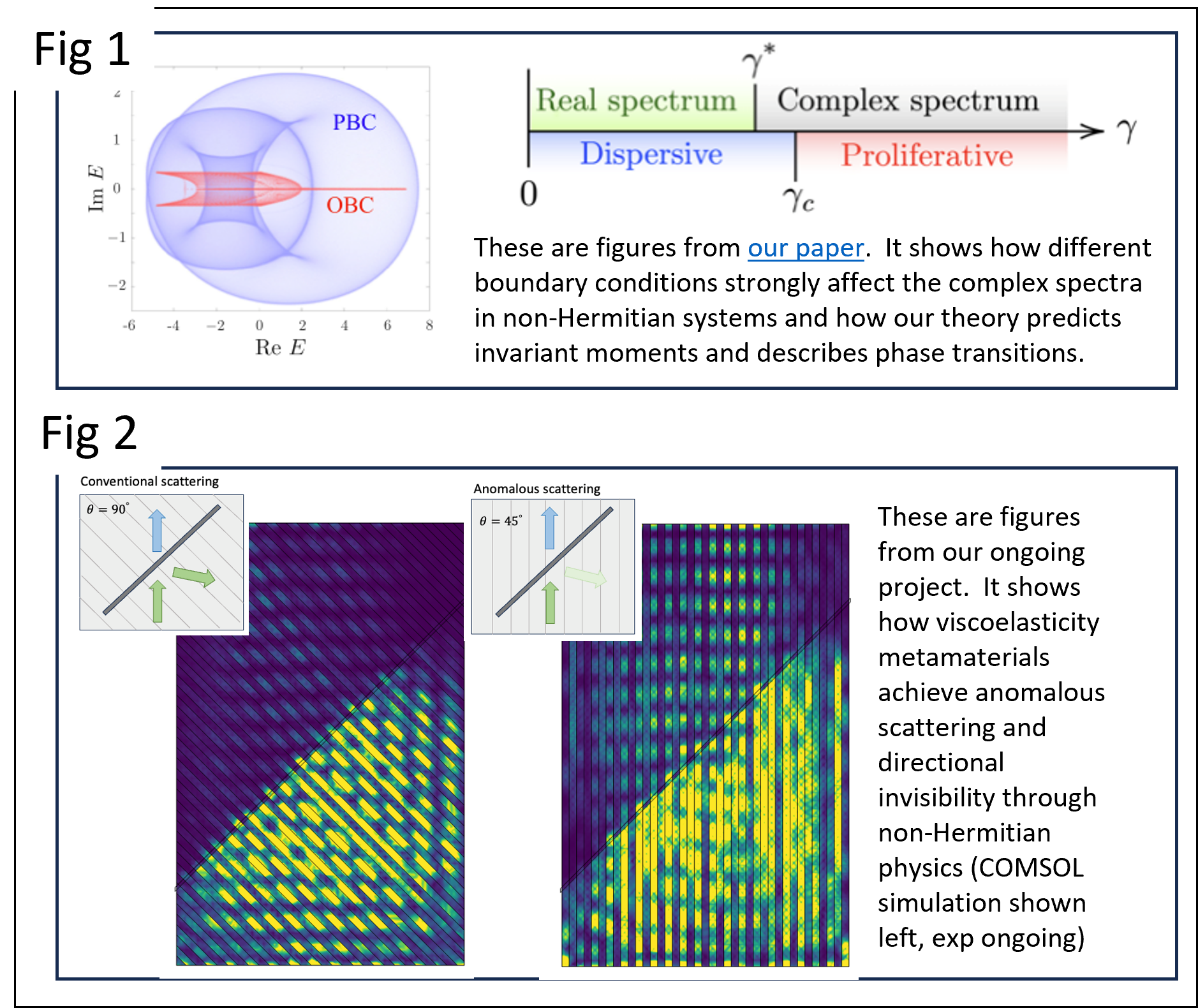 What Has Been Achieved: (i) In the past year, our work has been focusing on developing mechanical metamaterials where viscoelasticity is used to achieve unusual dynamical properties. We have published one paper on a fundamental theory for non-Hermitian systems which directly applies to viscoelastic metamaterials and reveals novel phase transitions (Fig 1). We are currently experimentally studying viscoelastic metamaterials for wave manipulation (Fig 2). (ii) We initiated a new project with the Kieffer group where we recover the dielectric function of CANs by fitting it with Maxwell-Wagner-Sillars interfacial polarization model capturing electrode polarization and segmental relaxation.
What Has Been Achieved: (i) In the past year, our work has been focusing on developing mechanical metamaterials where viscoelasticity is used to achieve unusual dynamical properties. We have published one paper on a fundamental theory for non-Hermitian systems which directly applies to viscoelastic metamaterials and reveals novel phase transitions (Fig 1). We are currently experimentally studying viscoelastic metamaterials for wave manipulation (Fig 2). (ii) We initiated a new project with the Kieffer group where we recover the dielectric function of CANs by fitting it with Maxwell-Wagner-Sillars interfacial polarization model capturing electrode polarization and segmental relaxation.
Importance of the Achievement Achievement (i) opens novel applications of CANs to the broad field of metamaterials and functional materials. The special tunability of CANs provide a highly valuable control for these applications. Achievement (ii) is expected to reveal relations between macroscale characteristics and internal mechanisms, an input for building fundamental theories.
How is the achievement related to the IRG, and how does it help it achieve its goals? Achievement (i) is an important part for the implementation of CANs for novel materials. Achievement (ii) supports the fundamental theory building of CANs. Both are important aspects of IRG 2 research.
Where the findings are published: one paper published https://journals.aps.org/prl/abstract/10.1103/PhysRevLett.133.216401